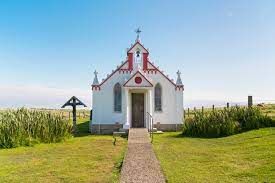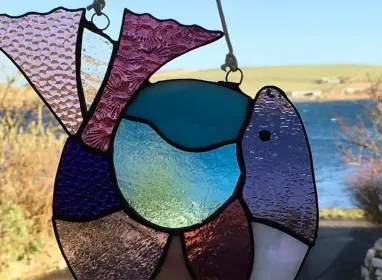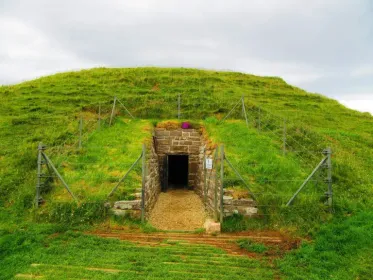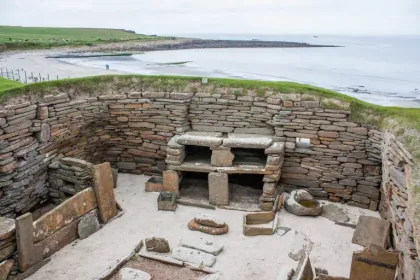 1 mile
1 mile
The Italian Chapel in Orkney

The Italian Chapel, a symbol of hope and peace, stands quietly on the windswept shores of Lamb Holm in Orkney, Scotland. This remarkable structure, born out of adversity during World War II, is a testament to the resilience and creativity of the human spirit. Constructed by Italian prisoners of war captured in North Africa and brought to Orkney in 1942, the chapel was built from limited materials and under challenging conditions. Yet, it emerged as a masterpiece of artistry and ingenuity, offering a fascinating glimpse into history while serving as a poignant reminder of peace.
A journey through history
Initially brought to Orkney to work on the Churchill Barriers – causeways designed to protect the British naval fleet anchored at Scapa Flow – the Italian POWs lived in Camp 60 on Lamb Holm. Amidst the harsh living conditions and separation from their homeland, they sought solace through their faith. Under the guidance of Father Giacomo Lombardi and the artistic vision of Domenico Chiocchetti, they transformed two Nissen huts into an extraordinary place of worship using scrap materials, concrete, and their ingenuity.
What inspired Italian prisoners in Scotland during World War II to build The Italian Chapel?
The chapel’s unique architecture
From the outside, The Italian Chapel may appear modest compared to grand cathedrals; however, its interior tells a different story. Visitors are immediately struck by the intricate detail and beauty that adorns every corner. The altar, made from concrete yet exquisitely decorated to mimic marble; the wrought-iron screen crafted from scrap metal; and frescoes that cover walls and ceiling create an atmosphere of reverence and awe. Chiocchetti’s painting of Madonna and Child above the altar remains a focal point that captivates all who enter.
Preserving history for future generations
In recognition of its historical significance and cultural value, efforts have been made to preserve The Italian Chapel for future generations. After WWII ended, many POWs returned home but Chiocchetti returned to Orkney in later years to restore his artwork ensuring that this symbol of peace would endure. Today it stands not only as a tourist attraction but also as a bridge between cultures reminding visitors from around the world about reconciliation after conflict.
A living monument
The chapel continues to function as a place of worship with services held regularly making it one among few wartime structures repurposed for peaceful means. It also serves as an inspiration for artists writers historians alike drawing people not just for its historical importance but also for its message hope amidst adversity.
Keypoints
- Constructed by Italian POWs during World War II
- Built using limited resources under challenging conditions
- Serves as both a tourist attraction and active place of worship
- Interior features intricate frescoes paintings crafted from scrap materials
- Symbolizes hope peace reconciliation after conflict
Check out things to do nearby...
 1 mile
1 mile
 6 miles
6 miles
Stained Glass Workshop in Orkney
 7 miles
7 miles
Sailing Holiday in the Orkney Islands
 13 miles
13 miles
Island Tours of Hoy
 13 miles
13 miles
Maeshowe Chambered Cairn in Orkney
 14 miles
14 miles
Longhope Lifeboat Museum on Orkney
 15 miles
15 miles
The Pier Arts Centre in Orkney
 16 miles
16 miles
The Old Man of Hoy
 17 miles
17 miles
Diving at Scapa Flow, Orkney
 19 miles
19 miles
Skara Brae, Orkney
 20 miles
20 miles
Visit the Castle of Mey
 27 miles
27 miles